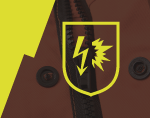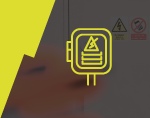The causes of Arc Flash – what you need to know
An important factor in keeping yourself safe is knowing the causes of Arc Flash incidents. Understanding what might prompt an Arc Flash will help you mitigate those risks, ultimately leaving you safer. It’s not just those who work directly on electrical systems who need to know about Arc Flash risks. Depending on the incident energy and whether it happens in a confined space (which focuses the energy forwards instead of allowing it to dissipate sideways), a blast from an Arc...
Read More







